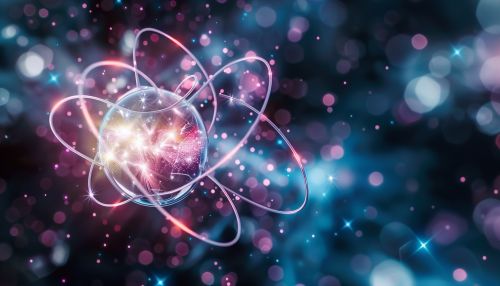Muon
Introduction
The muon is an elementary particle similar to the electron, with an electric charge of -1 e and a spin of 1/2, but with a much greater mass. It is classified as a lepton, along with the electron, the tau, and the neutrinos. Muons are not produced in radioactive decay, but are a common product of cosmic rays interacting with the Earth's atmosphere.


Discovery
The muon was discovered by Carl D. Anderson and Seth Neddermeyer at Caltech in 1936, while studying cosmic radiation. Anderson noticed particles that curved differently from electrons and other known particles when passed through a magnetic field. They were negatively charged but curved less sharply than electrons, but more sharply than protons, for particles of the same velocity. It was assumed that the magnitude of their negative electric charge was equal to that of the electron, and so to account for the difference in curvature, it was supposed that their mass was greater than an electron but smaller than a proton. This was the first discovery of a particle that was not a neutron or proton, the constituents of atomic nuclei.
Properties
Muons have a lifetime of 2.2 microseconds. Relativistic time dilation allows these particles to persist longer when moving at high speeds, as in cosmic rays. Muons also have a magnetic moment, which led to the development of the muon g-2 experiment, an ongoing high-precision measurement of the anomalous magnetic dipole moment of a muon.
Production and decay
Muons are produced as secondary particles in the collisions of cosmic rays with atoms in the Earth's atmosphere. They can also be produced in particle accelerators. The primary decay mode for a muon is into an electron, an electron antineutrino, and a muon neutrino. This decay is mediated by the weak force.
Role in research
Muons have played a significant role in the development of particle physics. The muon's unexpected discovery led researchers to reconsider the "particle zoo" that had been established at the time. The muon's properties also led to the development of the Standard Model of particle physics. Muons are used in various applications, from the search for phenomena beyond the Standard Model to the imaging of structures in muon tomography.
